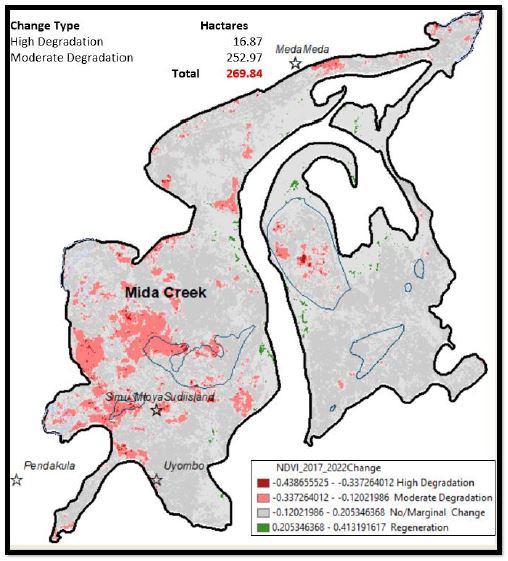-
READ MORE
Status of mangrove degradation in Mida Creek mangrove ecosystem In October 2022 we participated in assessing the the status of mangrove ecosystem degradation in Mida Creek, which was led by WWF Kenya and done in collaboration with other stakeholders. We hope this assessment and report will help guide interventions and resources aiming to protect and […]
-
READ MORE
Earlier this year we began our first deployments of the Kenya BRUV project. It is part of a broader project led by Wildlife Conservation Society (WCS), spanning multiple countries in the West Indian Ocean: Kenya, Tanzania, Madagascar, Mozambique. This particular project and sampling series follows from a 2018 Baited Remote Underwater Video (BRUV) project conducted […]
-
READ MORE
Although published literature regarding the 5 species of marine turtle found along the continental African east coast has grown substantially over the last decades, a comprehensive synthesis of their status and ecology is lacking. Using a mixed methods approach, which com- bined an exhaustive literature review and expert elicitation, we assessed the distribution and magnitude of nesting, foraging areas, connectivity, and anthropogenic threats for these species in Somalia, Kenya, Tanzania, Mozambique, and South Africa. A complex pattern of nesting sites, for- aging areas, and migration pathways emerged that identified areas of high importance in all 5 countries, although significant data gaps remain, especially for Somalia. Illegal take, bycatch, and loss of foraging and nesting habitat were identified as the most serious anthropogenic threats. Although these threats are broadly similar along most of the coast, robust data that enable quan- tification of the impacts are scarce. Experts identified regional strengths and opportunities, as well as impediments to turtle conservation. Topics such as legislation and enforcement, collaboration, local stakeholders, and funding are discussed, and future directions suggested. Given the pro- jected growth in human population along the continental African east coast and expected accom- panying development, anthropogenic pressures on turtle populations are set to increase. Stronger regional collaboration and coordination within conservation and research efforts are needed if current and future challenges are to be tackled effectively.


